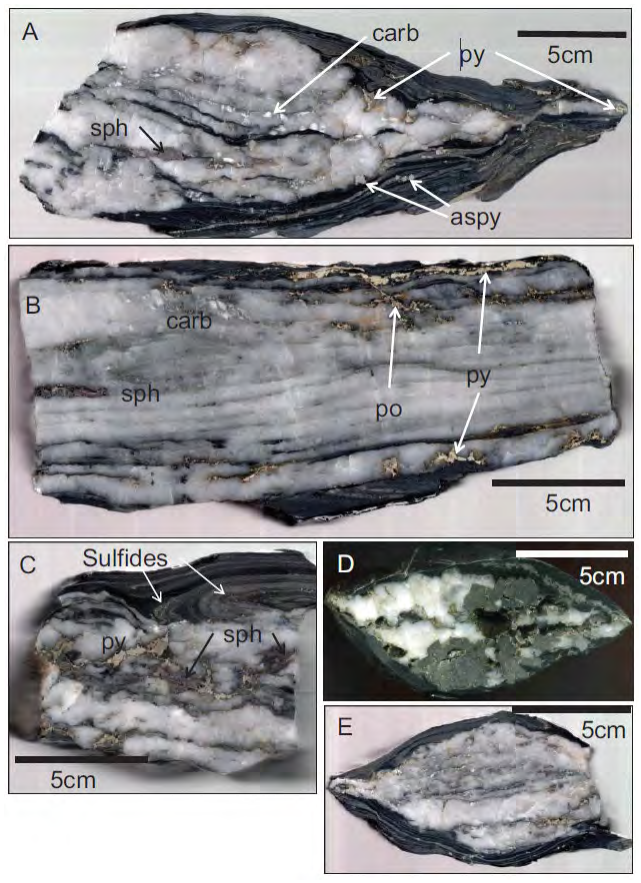The Paracatu Mine, also referred to as the Morro do Ouro Mine, is located immediately north of the city of Paracatu and 230 km southeast of the national capital of Brasilia in northwestern Minas Gerais State, Brazil.
Mineralization types and veins, sulfides and boudins morphology
A. Typical features showing base metals (sphalerite “sph”) and dolomitic to ankeritic carbonate (“carb”) in the vein core, along with carbonaceous wall-rock seams, with arsenopyrite (“aspy”) developed on the vein rim and as disseminated grains close to the veins, and pyrite (including gold) on the vein edge and in the boudin necks.
B. A segment of a large laminated vein away from the boudin necks, showing sphalerite and carbonate developed in the vein within individual bands formed during veining, pyrite on the vein edge, and pyrrhotite (“po”) in discordant shear bands, overprinting pyrite.
C. Deformed sulfides in the vein shown by arrows (black), along with more than one phase of quartz veining, are boudinaged along the foliation that is axial planar to adjacent folded bedding of intercalated graphitic shale and siltier material, with sulfides also segregated, or grown, in the fold hinges (white arrows).
D. A more massive type A boudin with milky quartz and coarse arsenopyrite overgrown by pyrite.
E. A laminated type A boudin, here showing an angle between the margin of the boudin and the internal banding, indicating that veining and formation of the internal banded structure predated the main phase of boudinage.

